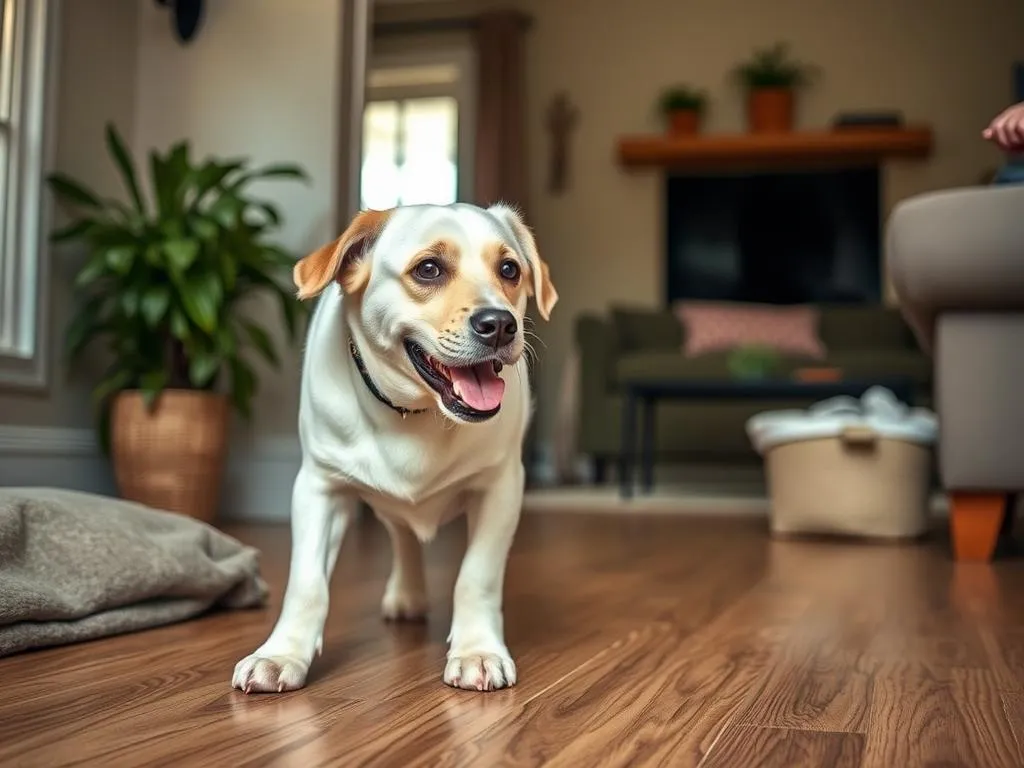
Introduction
Moving to a new home can be an exciting yet daunting experience, especially when you have a furry companion. The logistics of packing, transporting your belongings, and settling into a new environment can create a whirlwind of stress, not just for you, but for your dog as well. According to recent statistics, roughly 20% of pet owners report that their pets exhibit signs of anxiety during relocation. This highlights the importance of moving with your dog and understanding how to help a dog adjust to a new home.
In this comprehensive guide, we’ll explore the various aspects of moving with your dog, from preparing for the big day to ensuring a smooth transition into your new space. By following these steps, you can help your dog feel safe, comfortable, and secure in their new surroundings.
Preparing for the Move
Assessing Your Dog’s Needs
Before the moving process begins, it’s essential to take some time to assess your dog’s individual needs. Every dog has a unique personality and temperament, which can significantly affect how they handle changes in their environment.
- Understanding Your Dog’s Personality: Is your dog generally calm, or do they tend to be anxious in new situations? Recognizing these traits will help you tailor your approach to their transition.
- Identifying Special Needs: If your dog has any medical conditions, is elderly, or has anxiety issues, it’s crucial to factor these into your moving plans. Speak with your veterinarian about any necessary preparations or medications that might ease the transition.
Creating a Moving Plan
Having a well-structured moving plan is vital for a successful relocation. A checklist can help you ensure that no detail is overlooked.
- Moving Checklist for Pets:
- Schedule a vet appointment for any necessary check-ups or medications.
- Update your dog’s identification tags with your new address.
-
Ensure you have all supplies ready, including food, water, bowls, leash, and waste bags.
-
Choosing the Right Time: Think about your dog’s routine when deciding on a moving date. Try to choose a time when your dog is usually calm and less active, possibly during a weekend or a time when they are typically less anxious.
Getting Your Dog Used to the Idea of Moving
As the packing process begins, it’s essential to help your dog adjust to the changes gradually.
- Familiarizing Your Dog with Moving Boxes: Allow your dog to explore the packing boxes without pressure. Leave some boxes open and accessible so they can investigate and become accustomed to the sight and smell of them.
- Maintaining a Routine: Amidst the chaos of packing, try to keep your dog’s daily routine as consistent as possible. Regular feeding, walking, and playtime can provide a sense of stability that can ease anxiety.
The Moving Day
Keeping Your Dog Safe and Calm
Moving day can be hectic, so it’s crucial to prioritize your dog’s safety and comfort.
- Preparing for the Chaos: Create a distraction for your dog, such as engaging them in a favorite game or activity. If possible, consider having a friend or family member take care of your dog during the move.
- Safe Space: Designate a quiet space in your home where your dog can feel secure. This area should have their bed, toys, and some familiar items to help them feel comfortable.
Transportation Considerations
Traveling with your dog requires specific attention to detail, especially on moving day.
- Best Practices for Traveling: If you’re driving, ensure your dog is securely fastened with a pet seatbelt or in a crate. Take breaks every couple of hours to let them stretch and relieve themselves.
- Pet-Friendly Vehicle: Make sure your vehicle is ready for your dog. Bring along water, food, and any necessary supplies, such as waste bags and a leash.
Arranging for Temporary Care
If your moving day is particularly hectic, consider arranging for temporary care for your dog.
- Pet Sitters or Boarding: Research local pet sitters or boarding facilities that can provide a familiar face for your dog during the transition.
- Familiar Faces: Having a friend or family member take care of your dog during moving day can help ease their anxiety, as they will be surrounded by someone they trust.
Settling Into the New Home
Creating a Safe Space for Your Dog
Once you arrive at your new home, creating a designated area for your dog is vital for their comfort.
- Designated Area: Set up a corner in your new home specifically for your dog. Include their bed, favorite toys, and other familiar items that can help them feel at home.
- Familiar Items: Bringing along familiar items from your old home can provide comfort. The scent of their old blanket or favorite toy can help ease the transition.
Introducing Your Dog to the New Environment
Once you’ve settled in, it’s time for your dog to explore their new surroundings.
- Gradual Exploration: Allow your dog to explore the new home gradually. Start with one room at a time, allowing them to sniff and investigate, which can help reduce anxiety.
- Navigating New Sounds and Smells: Every home has its own unique sounds and smells. Be patient and give your dog time to adapt to these new stimuli.
Establishing a New Routine
Consistency can significantly aid your dog’s adjustment to the new home.
- Importance of Consistency: Try to maintain the same feeding, walking, and playtime schedule that they had in your previous home. This consistency can help your dog feel more secure.
- Re-establishing Daily Schedule: As you settle into your new home, reinforce a routine that your dog can rely on, providing them with predictability.
Helping Your Dog Adjust Emotionally
Recognizing Signs of Stress or Anxiety
It’s essential to be aware of your dog’s emotional state during this transition.
- Common Stress Behaviors: Look for signs like excessive barking, hiding, or pacing. Understanding these behaviors can help you address their emotional needs.
- Understanding Body Language: Learn to read your dog’s body language. Ears pinned back, a tucked tail, and avoiding eye contact are typical signs of stress.
Techniques to Ease Anxiety
There are various methods to help your dog cope with the stress of moving.
- Calming Aids: Consider using calming aids such as pheromone diffusers or anxiety wraps. These products can help soothe your dog during this transitional period.
- Interactive Games: Engaging your dog in interactive games or training exercises can boost their confidence and distract them from stressors.
Socialization Opportunities
Introducing your dog to new people and environments can significantly help with their adjustment.
- Meeting New Neighbors: Encourage your dog to meet new neighbors and their pets. This can create positive experiences in their new environment.
- Exploring Local Parks: Take your dog on walks to local parks or dog-friendly areas. This not only helps them get accustomed to the new neighborhood but also provides great opportunities for socialization.
Long-term Adjustment Strategies
Monitoring Your Dog’s Behavior
After the move, keep an eye on your dog’s behavior for any signs of ongoing stress.
- Behavioral Changes: Be observant of any changes in behavior. If you notice persistent anxiety or unusual behaviors, it may be time to consult a professional.
- Seeking Professional Help: If your dog continues to struggle with the adjustment, don’t hesitate to reach out to a veterinarian or a professional dog trainer for advice.
Building a New Routine Together
Creating a consistent routine is vital for long-term adjustment.
- Regular Exercise: Ensure your dog receives regular exercise to help alleviate stress and maintain physical health. Daily walks and playtime are essential.
- Incorporating Training Sessions: Regular training sessions can build trust and confidence in your dog, making them feel more secure in their new environment.
Creating Lasting Memories
Finally, make the most of your new surroundings together.
- Exploring New Surroundings: Discover your new neighborhood together. Take walks, visit local parks, or enjoy outdoor activities that you both can enjoy.
- Documenting the Transition: Capture moments of your new journey together. Take photos and create a scrapbook of your dog’s transition into their new home.
Conclusion
In summary, moving with your dog can be a challenging but rewarding experience. By taking the time to prepare, ensuring their comfort on moving day, and providing a stable environment in your new home, you can significantly ease the adjustment process for your beloved pet. Remember that patience and consistency are key during this transition. With love and support, your dog will soon feel at home in their new surroundings.
As you embark on this journey together, embrace the changes and enjoy the new adventures that await you both.









